Passionate hunter Tomo Svetic lives out his dream hunt in the remote and wild Tian Shan mountains of Kyrgyzstan in pursuit of the prized ibex
https://www.youtube.com/watch?v=JRIvmBdgePM
To book a hunt with Tomo, visit www.artemis-hunting.com
It was 5.30am and our minivan was absolutely crammed with hunting gear as we drove along a dusty road to Bishkek. The sun was just above the horizon, making the dawn sky red – i the perfect start to our journey back to the Tian Shan mountains. After an unplanned, but very nice, overnight stay in Istanbul, we were ready to get some action in the wild terrain of Kyrgyzstan, Central Asia, close to the border with China and Tajikistan.
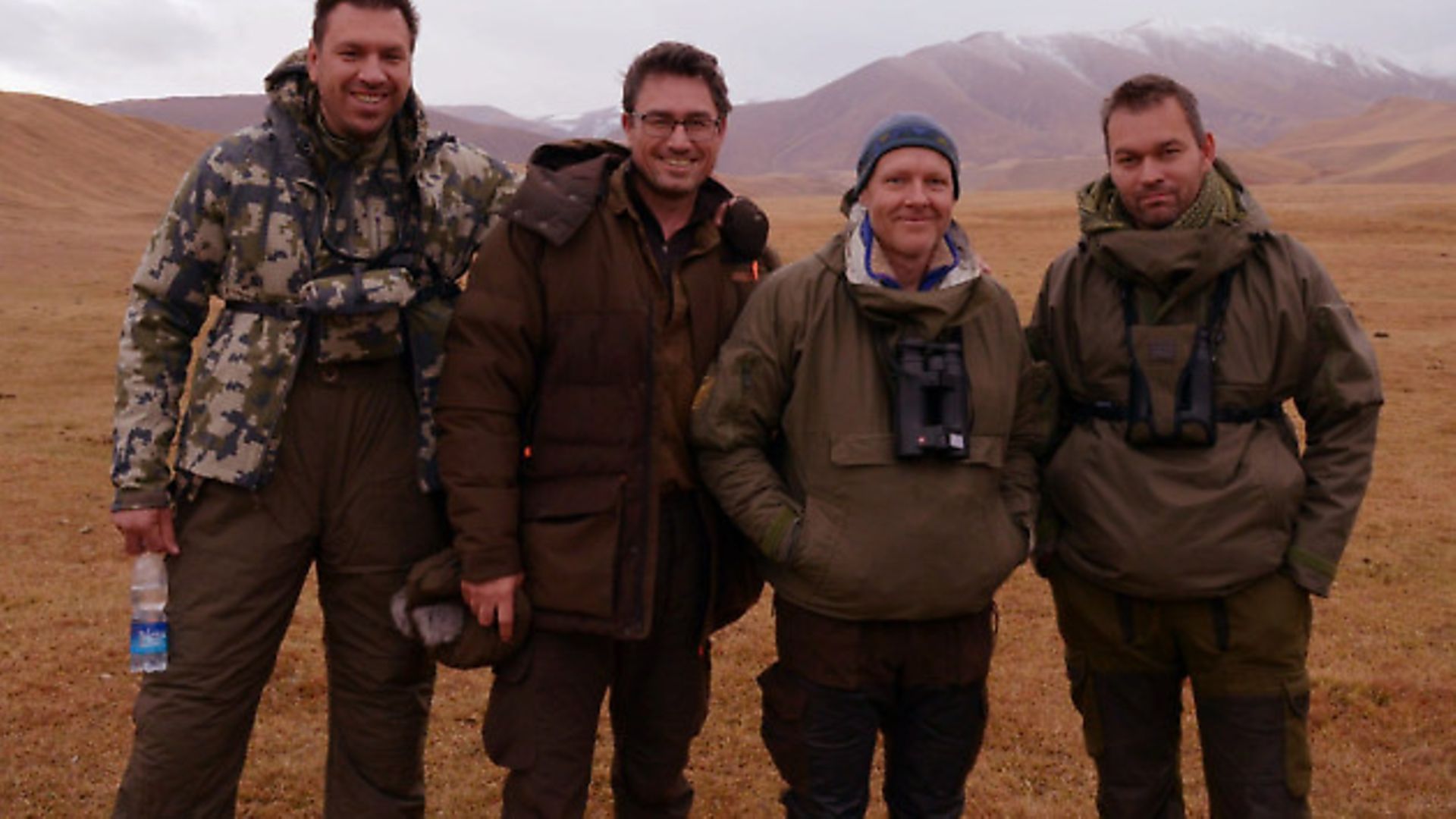 credit: FieldsportsChannel.tv
credit: FieldsportsChannel.tv
Our ‘team’ was Craig Coote from Tier-One, who has already had a taste of Kyrgyzstan; Rob Gearing from Spartan Precision Equipment, a very experienced outdoorsman; cameraman David Wright from the Fieldsports Channel; and Avat, my right-hand man for business and great friend from Kyrgyzstan. Oh, and me, Tomo Svetic from Artemis Hunting.
We all knew that the trip to our base in the mountains would be long as we had to traverse a wide and winding road, part of the Silk Road centuries ago. We were tired but in high spirits. After the first two hours of the drive, which passed quickly, we were ready to have a meal by the side of the road. The restaurant was newly built in the modern Kyrgyzstani way and served traditional dishes. Some of us decided to eat beshbarmak – soup with noodles and sliced meat – while the others went for a traditional stew called kuurdak.
The road deteriorated the further south we drove. We passed mountain ranges with peaks up to 3,000m high and we could see herds of cattle, horses and sheep. Lots of nomads live here in their yurts, producing meat, cheese and milk. Their lifestyle hasn’t changed much for centuries, and after the snow meltsevery year they come here with their livestock until the new snow comes and they have to retreat to their villages far away.
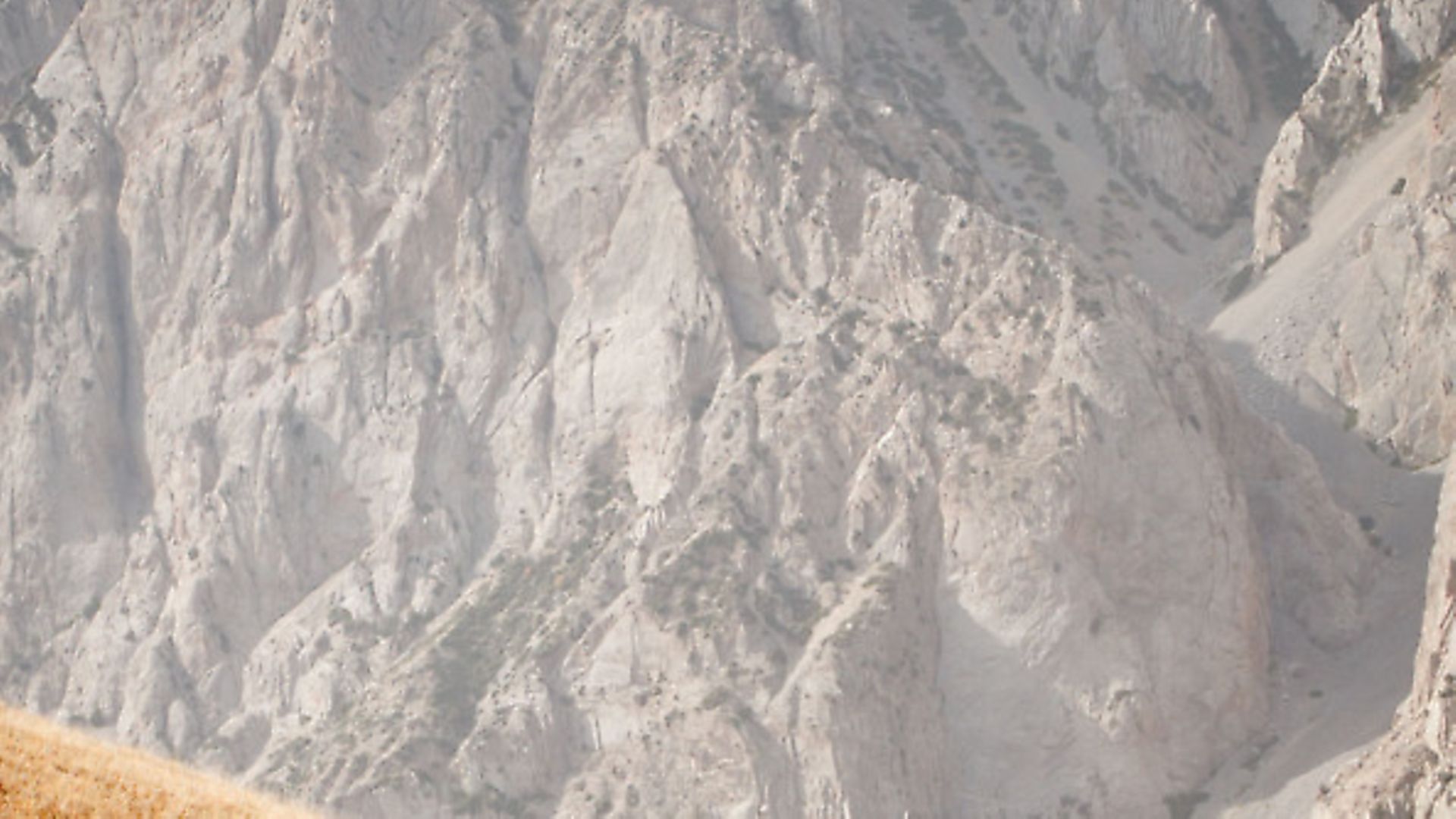 credit: Archant
credit: Archant
We always stop to try traditional salty cheese kurut and horse milk. For Rob and David, this was part of their initiation so Craig made up a story about dried horse testicles and that everybody had to eat them on their first trip.
After eight hours on the road, and two off-road, we finally arrived at our camp, at 3,000m altitude. Two old, green wagons were our base for the night. In our wagon, we had four comfortable beds, a table and six chairs, a stove and just enough space to put our luggage and rifles between.
It was late afternoon, the air was getting colder quickly and we had to use our time to check rifles and rangefinders. Rob had brought his Blaser R8 Professional Success Leather in 7mm Rem Mag and a spare barrel in .308 Win, while Craig had his ‘hammer of Thor’ – a mighty custom-made rifle in .300 RUM that we used two years ago for another ibex hunt.
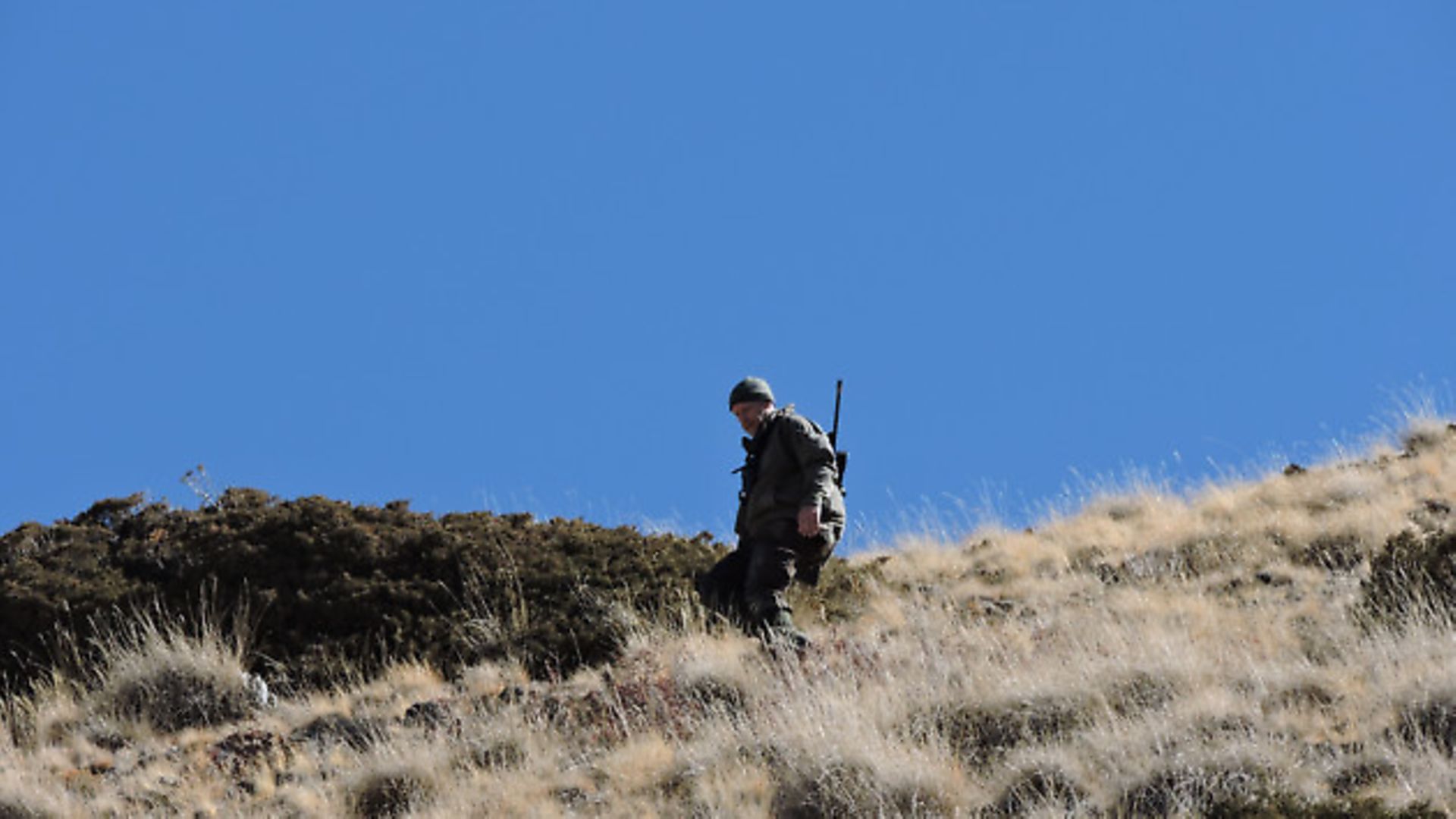 credit: FieldsportsChannel.tv
credit: FieldsportsChannel.tv
We had enough ammo to play with and in this valley surrounded by mountains, it was easy to shoot at any distance we wanted. Rob had a Swarovski scope with a ballistic turret. Craig used the Zeiss V8. At 100m, both rifles were straight on the target so we moved to distances of 300-800m using Leica Geovid HD-B rangefinders. The software inside calculated everything for us, giving us exactly the number of ‘clicks’ for every distance.
At this altitude, your bullet drop shifts significantly – you have to shoot higher than expected because your bullet travels faster for longer in the thin air. It is easy to shoot over your target. The Leicas worked brilliantly and we managed to hit targets up to 800m easily with both rifles.
Pleased with our shooting results, it was time to get into the wagon for dinner. Our host Janibay prepared the table and served basic but tasty food: cheese, tomatoes, salami, apples, bread and some French salami Rob brought just in case. The atmosphere was great and, fuelled by whiskey, our stories became more and more interesting. It was a great treat to make us sleep better!
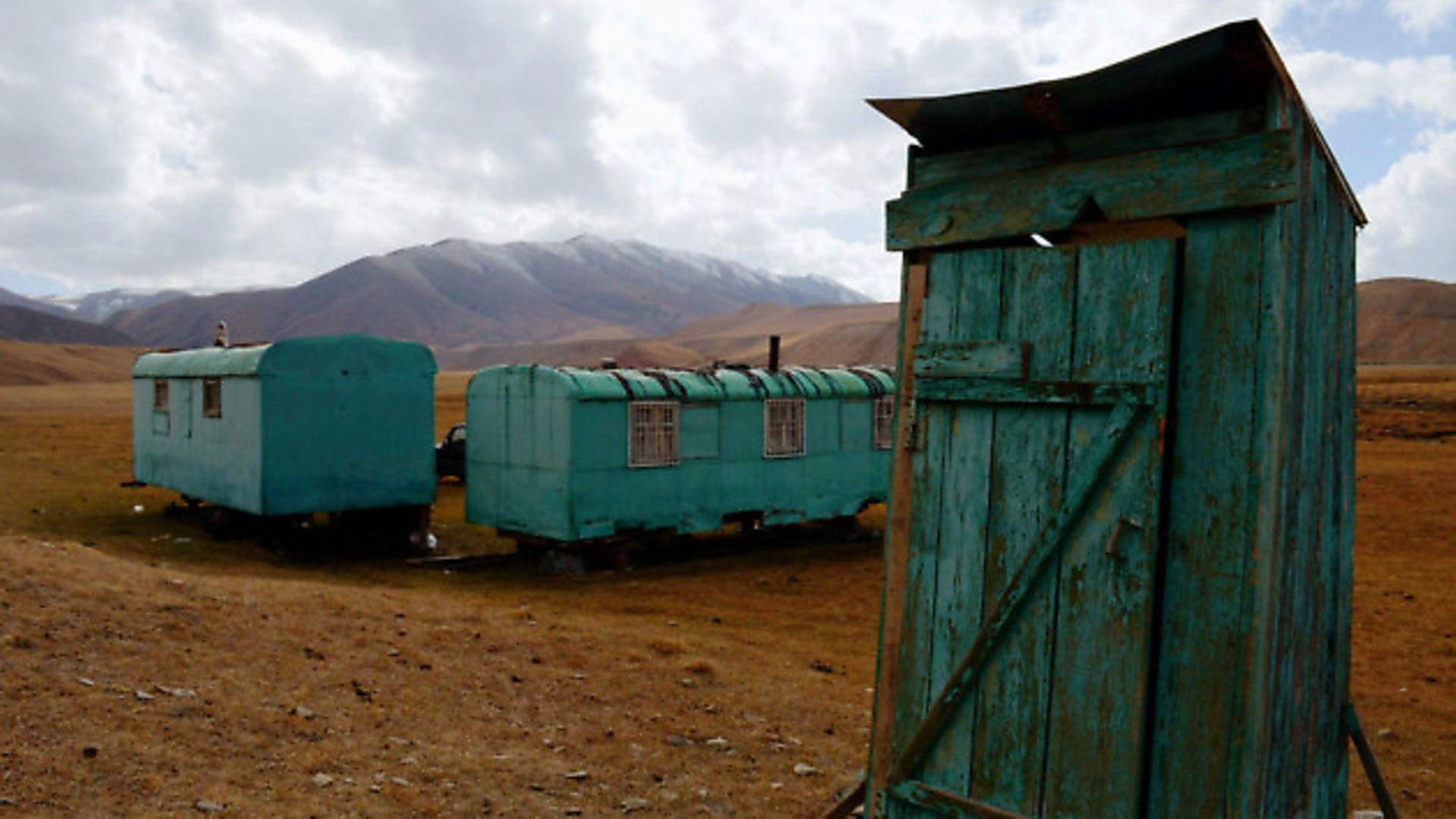 credit: FieldsportsChannel.tv
credit: FieldsportsChannel.tv
We all slept well despite Rob’s and my snoring. Only macho guys like us snore a lot so I guess David and Craig were just jealous. After breakfast, we got all our gear ready to be shipped to another base. The guides had promised to come at 6am but in this part of the world, for nomads in particular, time is relative. They were late, but we were prepared for it. They know what they’re doing and we trust them, so we overlook their tardiness. Our guides’ Japanese 4x4s were good enough for the few hours of off-road to take us safely to the second base. The weather was changing non-stop and we experienced the first flakes of snow. It was nothing serious but the last thing you want is to get stuck in these mountains.
Our final base was a small, warm and comfortable house, two wagons and a toilet – the only buildings in this part of the Tian Shan mountain. The closest house was a two-hour drive away and we all knew that we would be going much further than that, but on horses. Before I arranged I told my team in Kyrgyzstan that we wanted to experience an adventure so it had to be hard hunting. We put our hunting clothes on and all the necessary gadgets and stuff into our rucksacks. We couldn’t wait to start riding our horses. After we had a traditional meal of Marco Polo sheep meat it was time to leave.
All the horses outside were packed up and ready to go. Every horse was named after an action-movie star or a boxer, Jackie Chan, Van Damme, Bruce Lee and mine was Tyson. I deserved the strongest and smartest because on the last trip, I had the dumbest horse in Kyrgyzstan. Anyway, we started riding through the valley, crossing streams and rivers before we started to climb. The weather turned bad and cold rain with a northerly wind was a good test for our clothing and boots.
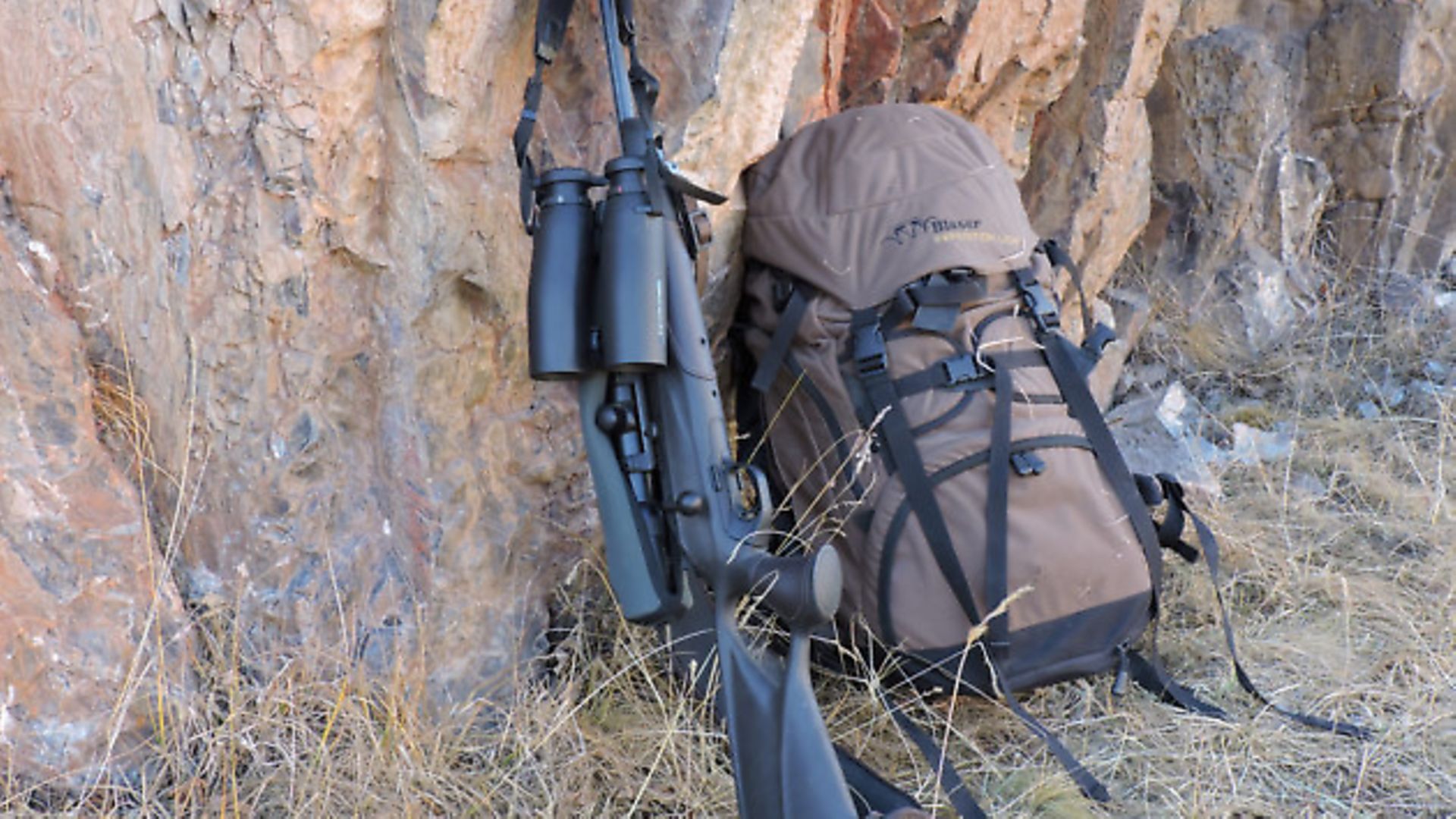 credit: FieldsportsChannel.tv
credit: FieldsportsChannel.tv
It was late afternoon when we entered the canyon leading up to the mountain and high rocky peaks and we didn’t want to waste any time resting the horses before getting to the position for our ‘spike’ camp. Riding uphill was nice, and not too steep. The scenery changed a lot and on the ground we could see old horns from Marco Polo sheep and ibex killed, mostly by wolves, a long time ago.
Our main guide, Aman, stopped suddenly and asked us to get on the ground. This was our first encounter with ibex on this trip, and Rob and David’s first ever. It was a herd of 30 animals, mostly females with young and a few two- to three-year-old males fighting and jumping around. David filmed them but they weren’t animals to hunt. Just below their position was our place for the night.
Ekes, the guide, started the fire while Ulan and Aman took the saddles off the horses. We joined in, helping them make tents and prepare for the night. It was a good feeling to stretch our legs finally and we were all pleased with our clothing because, despite some rain, we were dry. It was goo to eat something warm, noodle soup and plenty of tea. I don’t know how late it was when we went to our tents, it was so nice sitting around the campfire looking at the stars, which are much brighter there.
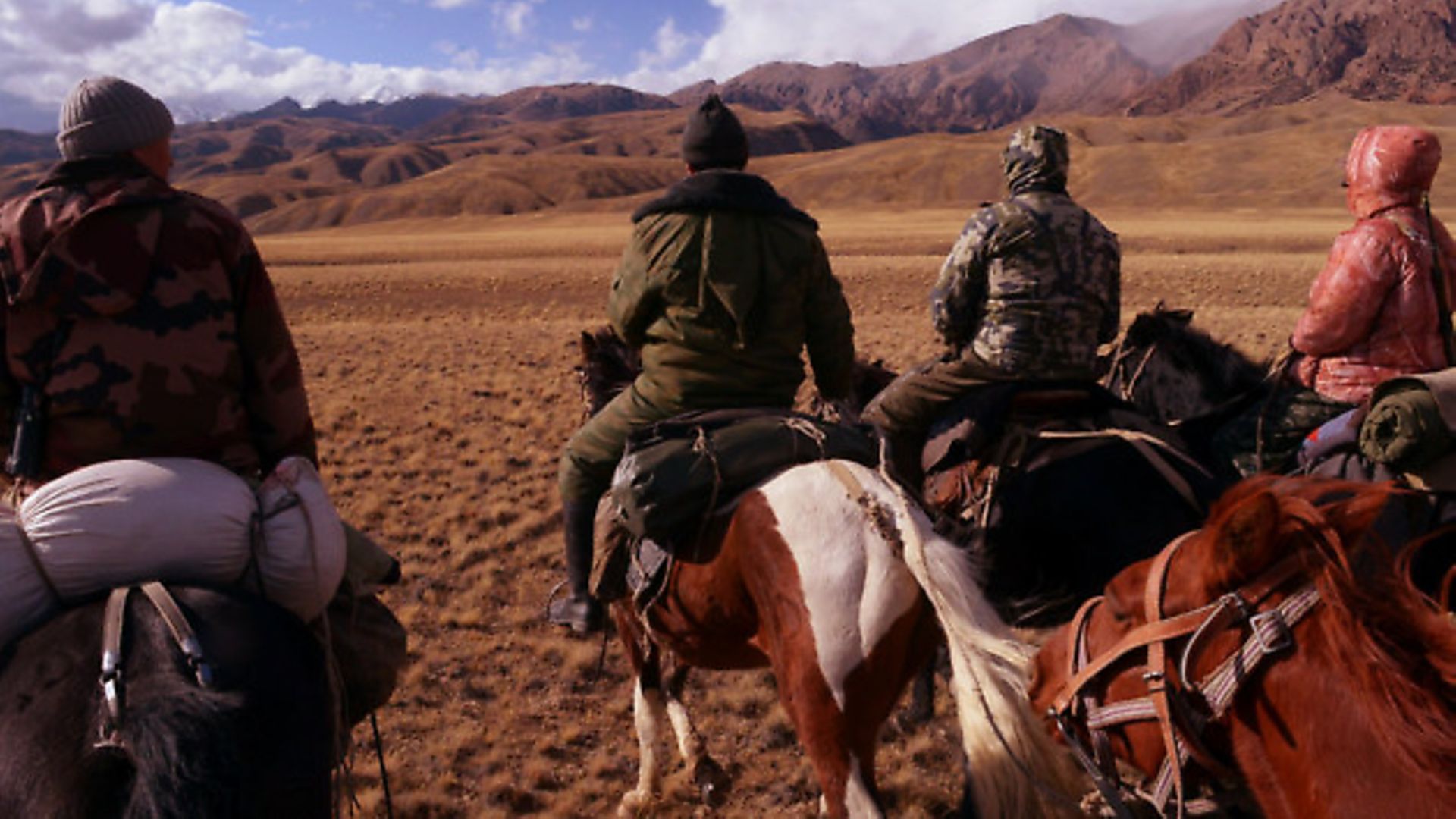 credit: FieldsportsChannel.tv
credit: FieldsportsChannel.tv
The morning was quite fresh and the ground covered in frost, as well as our tents and rucksacks. The short grass rustled under our feet. Aman and Ulan went to fetch our horses, Ekes set the fire and our breakfast, while the rest of us prepared our gear and took a few photos.
We decided to leave the tents and most of our gear behind and observe a few valleys where ibex like to spend time in the morning. For 45 minutes we rode uphill, reaching a 3,500m-high ridge with an amazing view of the valley where our camp was and the peaks on the nearby Chinese border. On our left, 1,200m downhill in the shade, was a herd of ibex – some good trophies and females were grazing.
Aman asked me if I was happy with the size of some of the trophies because, after all, I had to be sure we got the quality I wanted for my clients. Three were well over 100cm, a great size for any hunter. The plan was that the first chance would go to Rob, I would shoot second then Craig would take his trophy.
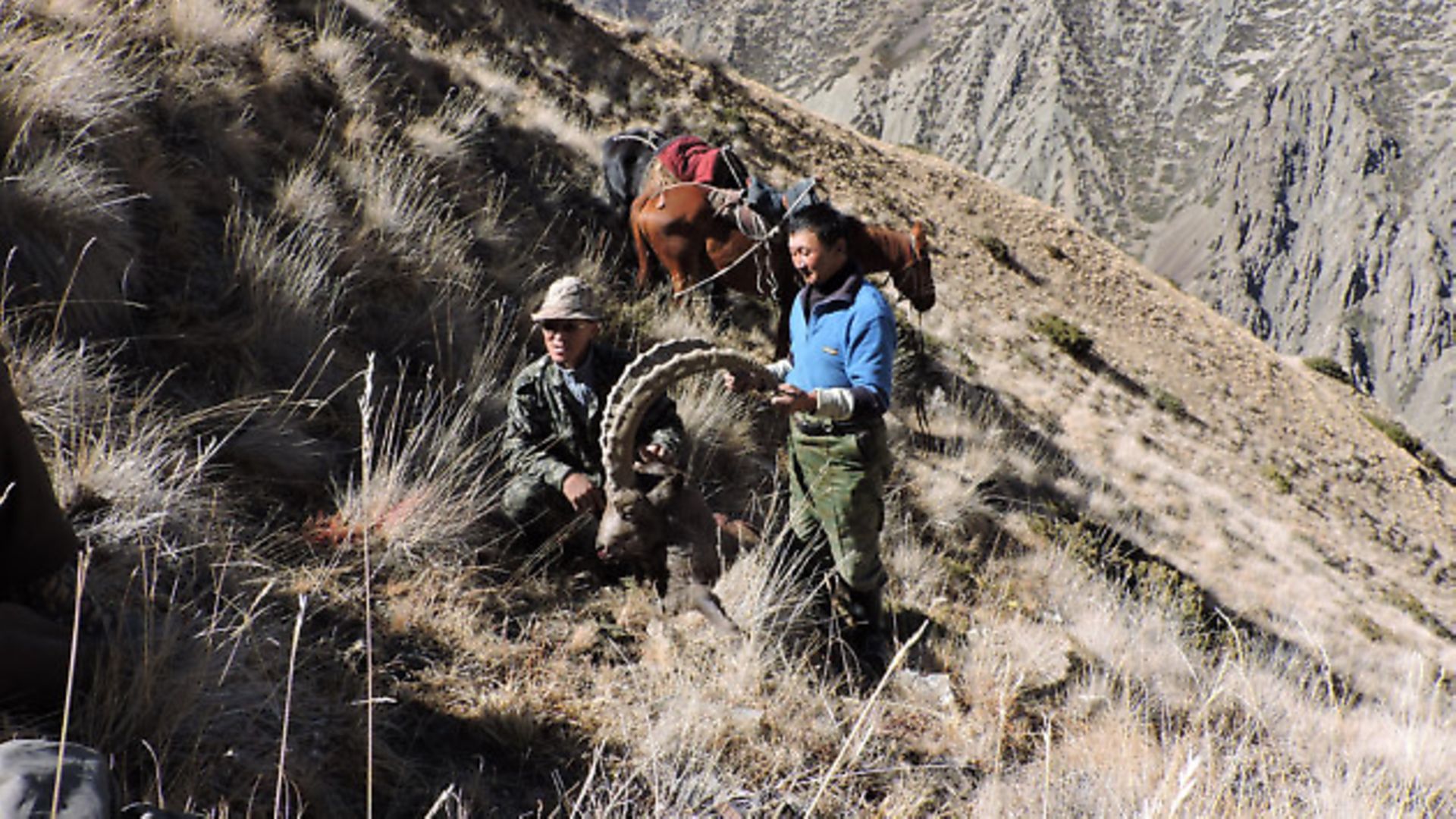 credit: FieldsportsChannel.tv
credit: FieldsportsChannel.tv
Ekes took Rob for a promising long stalk but the terrain didn’t give good cover so they had to walk around, firstly downhill and then uphill. From our position, we could observe hunters and ibex at the same time and it was nice to observe the whole stalk, which turned out to be quite challenging. Rob and Ekes couldn’t see any ibex and they needed to get to the higher ground to get into a more dominant position above the herd, so they disappeared in the rocky peaks 2km from us.
The wind was almost negligible but changing direction every few minutes, and was still more than enough for ibex to scent them 1,000m away. The herd went west downhill and Rob and Ekes climbed way too high uphill. We couldn’t tell them so we packed up our gear and moved further west in the valley, where the herd had crossed the stream beneath the peaks.
Now we were below the peak where Rob was. He spent hours climbing and stalking with Ekes, while we rested on the ground drinking tea and sunbathing. They arrived exhausted and in quite bad shape but smiling.
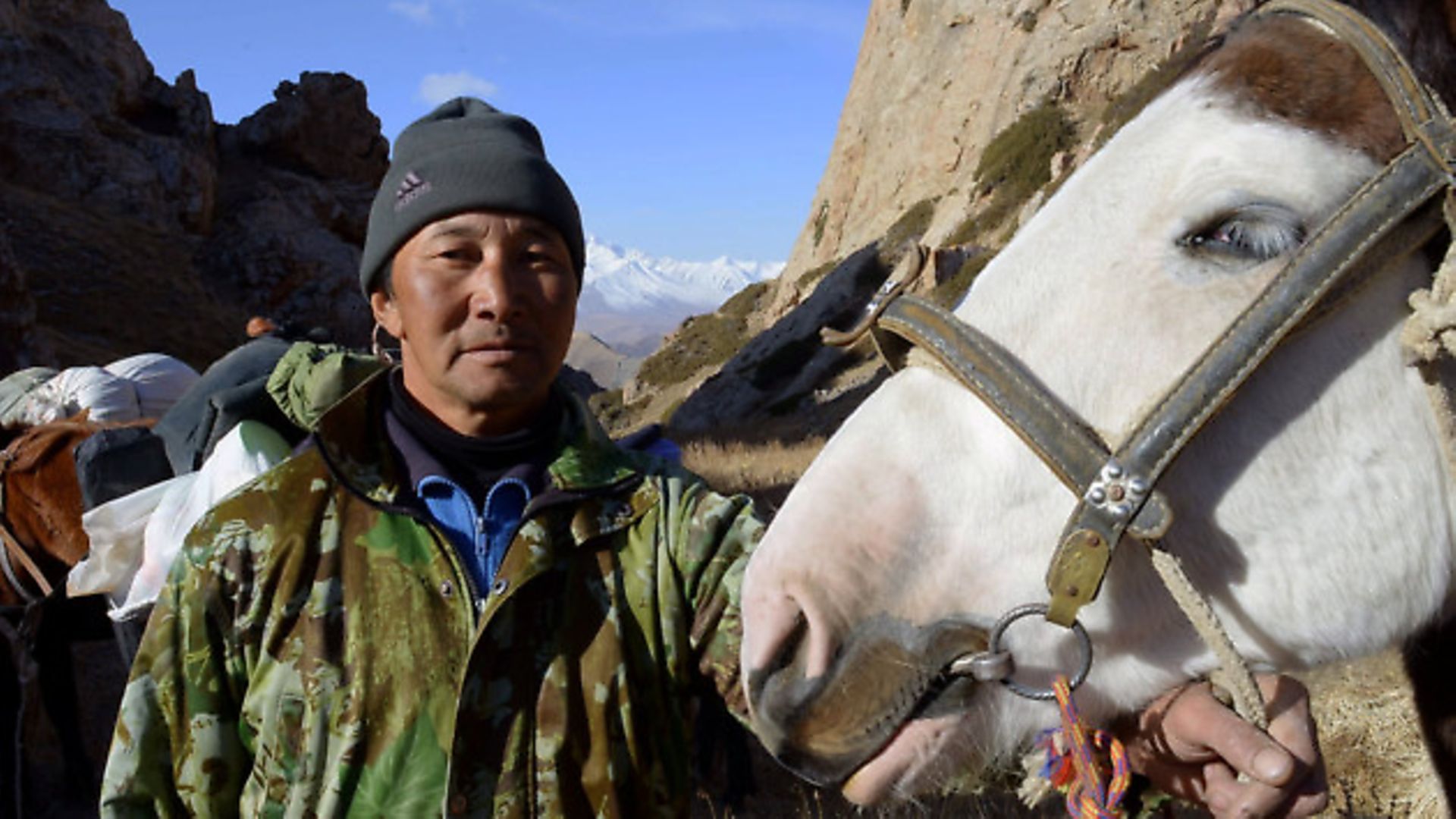 credit: FieldsportsChannel.tv
credit: FieldsportsChannel.tv
It was midday – plenty of time for another try on the ib. Once again, we geared up and rode uphill to get to one of the spots above a big, long canyon. Aman and Ekes went high up on the left to glass the ground on the south, the rest of us were glassing and taking some camera shots from a breathtaking position. The area in front of us was a massive rocky slope covered in sharp ridges with ibex tracks on the slopes.
A galloping horse with Ekes on board broke the silence. Craig and I both knew he had good news. They had spotted good-sized trophies higher up but the plan was to leave the horses behind and climb above the ibex on foot. It was hard work following our guides (and Rob had already had that stalk earlier), but we were all waiting for this moment. We split into three teams. It was still Rob’s turn to get the first ibex so he went on a long, steep stalk over the mountain ridge way above the ibex. Ulan had to go to a high point to observe Rob and Ekes while Craig, David and myself followed Aman.
It was a difficult and quick descent to get into position and spot the herd. We were sliding, falling and torturing our legs badly as we made our way down. To everyone’s relief, We finally got to the narrow, sharp ridge slightly above the herd, 900m away and facing southwest. The position was good and we could see Rob stalking high up and looking for the shooting spot. Having the sun in front of us wasn’t ideal. The glare from our scopes, binos and camera could betray our position, and the air was dusty so the mirage was noticeable, which makes long-range shooting more difficult. At least the shooting angle wasn’t more than 15 degrees downhill. The ibex were calm, grazing and resting in the shade.
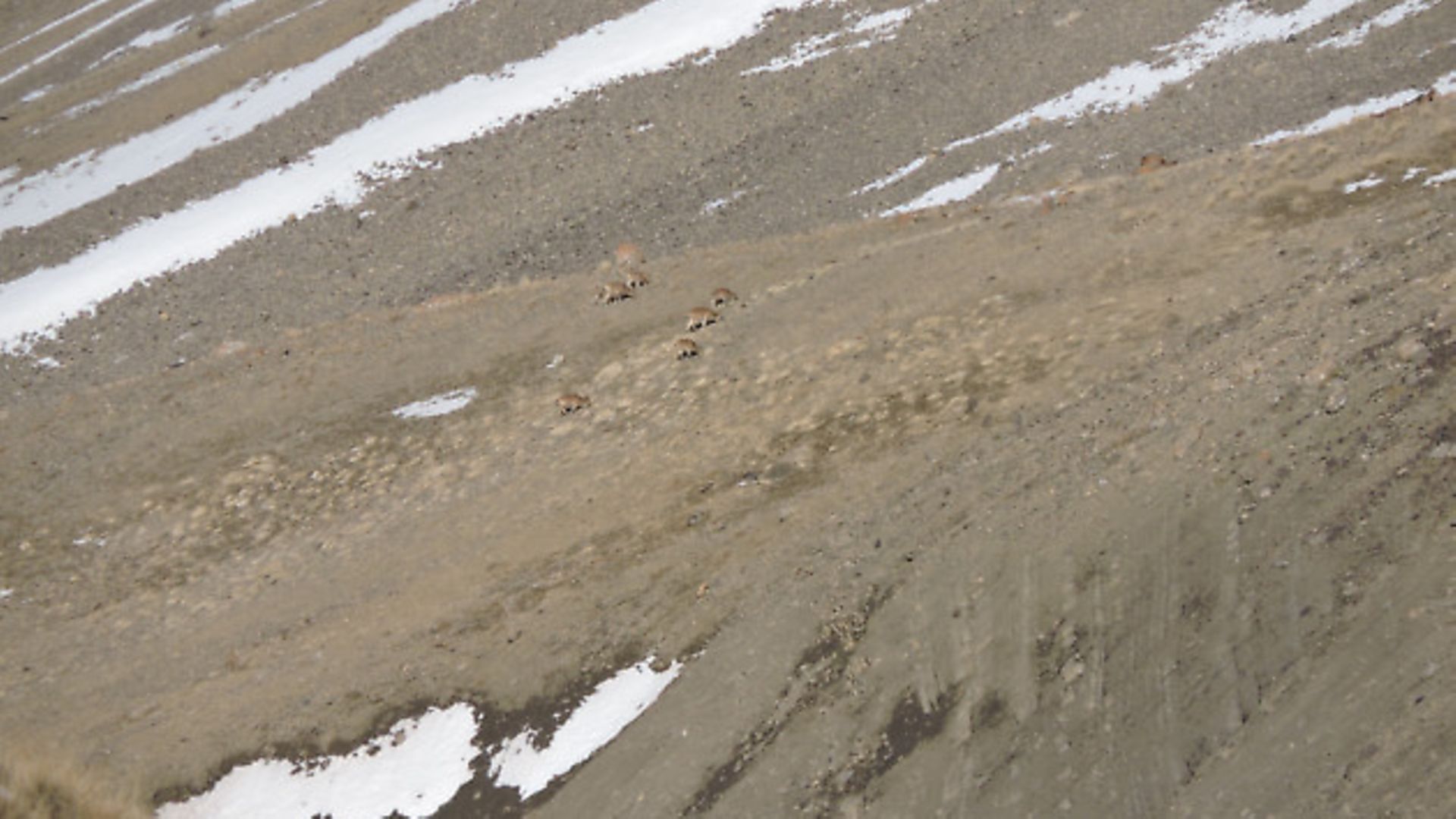 credit: Archant
credit: Archant
All of the trophies were 105cm or more, and the biggest was probably about 120cm. Forty-five minutes later, Rob showed up on the horizon, behind the ibex on the opposite side from us. Then the ibex, sensing Rob and Ekes, started moving towards us. The wind looked good to us but maybe they had rolled over some stones and made a noise, or maybe it was the glare from Rob’s head.
It was again a race against time as we ran further downhill to get into position to shoot. Rob’s stalk was over and it was my turn to shoot. Aman put my Blaser rucksack in front of me as a rest and I had Craig’s heavy rifle. It was very difficult to aim properly. My heart rate was too high, but I knew that I must not miss this chance.
The ibex were jumpy and I was having to fight to stop from sliding down the slope. The dust filled my nostrils, the heavy rifle was sliding from my rucksack – it was more than a 40% angle on that slope so gravity was working well on me and the rifle. It took me a minute to finally put my cross hair on one of the biggest ibex, standing broadside at 420m.
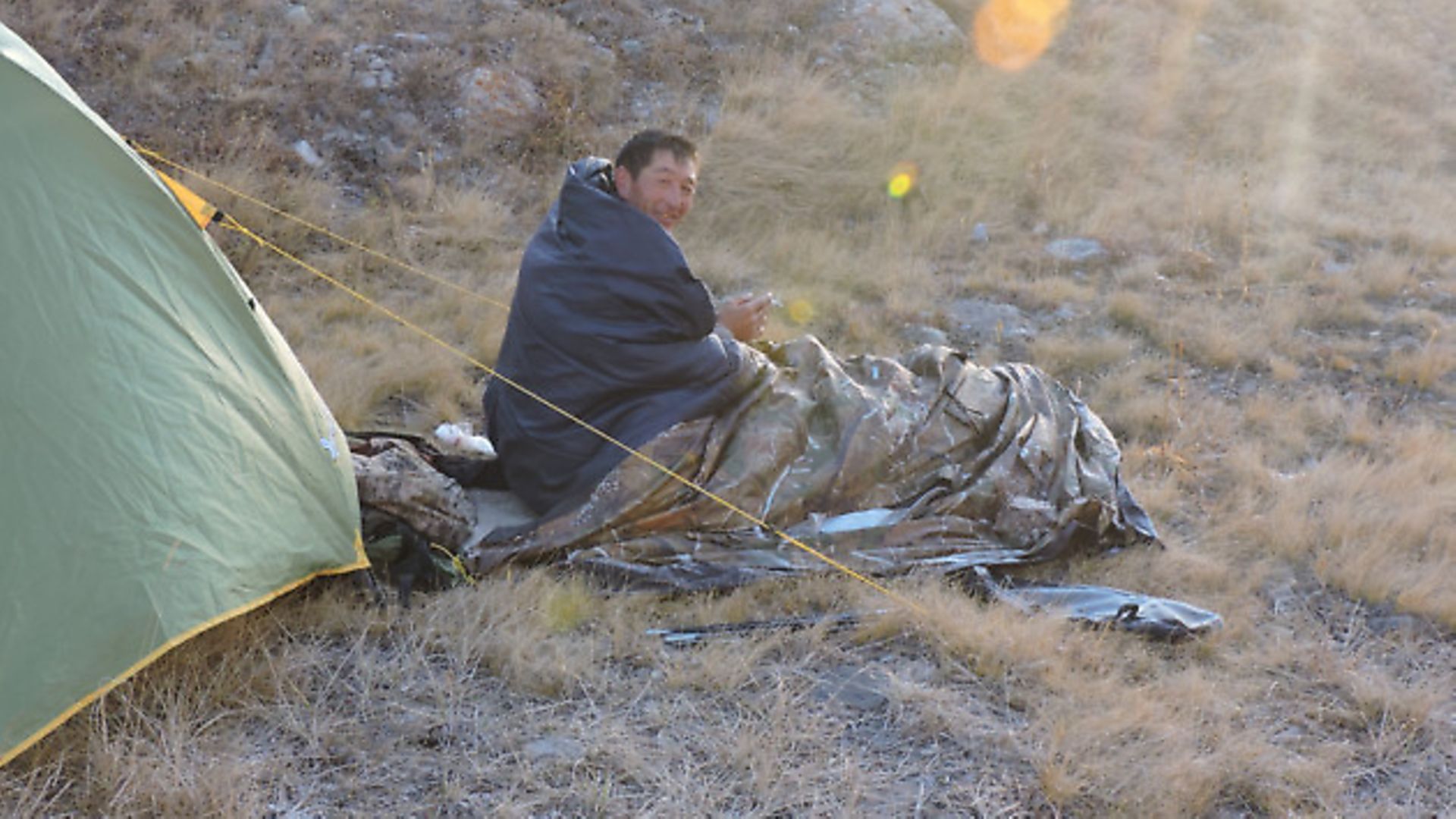 credit: Archant
credit: Archant
The air around the ibex was still full of dust after their run so the mirage was challenging, while the sun was killing my eyes. Craig was my spotter, giving me the right number of ‘clicks’ on the scope and I dialled up for the given range. I managed to stop my body sliding but my heart rate was still high so I shut out all my emotions and focused only on the bullet impact. I had to turn down my magnification on the scope to 8x to stop the cross hair shaking and to give myself a wider field of view in case of a follow-up shot.
I pulled the trigger at the same moment my feet lost their grip. The shot was just above the spine of the ibex that I wanted. It was important not to panic and get ready for the second shot. Normally, hunters stop in disbelief and have a mental block, giving their quarry time to run off. I reloaded instantly and aimed again, but this time at the ibex facing me at a slight angle, just enough for a confident shot.
I fired and the ibex collapsed instantly, showing a big splash of hair on his back where the Accubond 200gr bullet exited. The celebration lasted only a few seconds because we now wanted Craig to take the second trophy. He took his rifle from my hands and followed Aman. It was a long, difficult and dangerous approach.
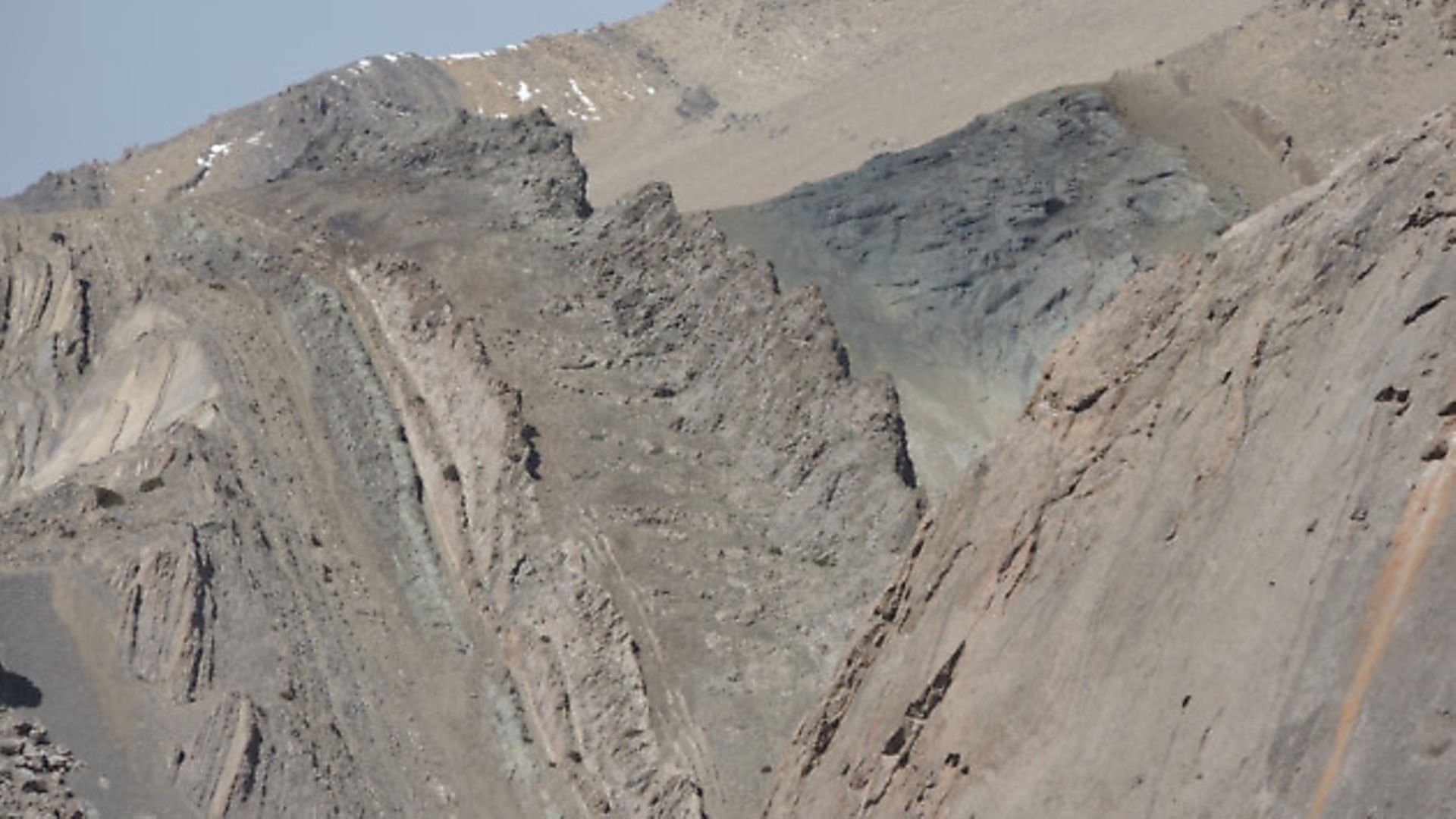 credit: Archant
credit: Archant
The ibex herd went down the canyon maybe 500m and disappeared for some time as Craig and David still battled the ground, now uphill. Finally, the herd showed up on the other side of the canyon but too far away. There was nothing to do but head to where my trophy was lying. At least one of our group had a shot. Rob and Ekes joined us a short time later, exhausted. Sweaty, tired, burned by the sun and covered in dust, we went all the way back to our tents.
The next morning we woke up at 6am. It was a new day with new challenges ahead. We had a long ride to some snowy peaks at 4,000m or more. We left my trophy and the meat in a small cave at the bottom of the cliff above our camp. It was very cool inside and acted like a fridge.
The ride was long and dangerous at some points. The narrow path, just a few inches wide on the steep slope above the canyon, was scary, but this was a routine walk for the horses so we relaxed and joked about the whole thing, while carefully keeping only the tips of our boots in the stirrups just in case we had to jump off quickly!
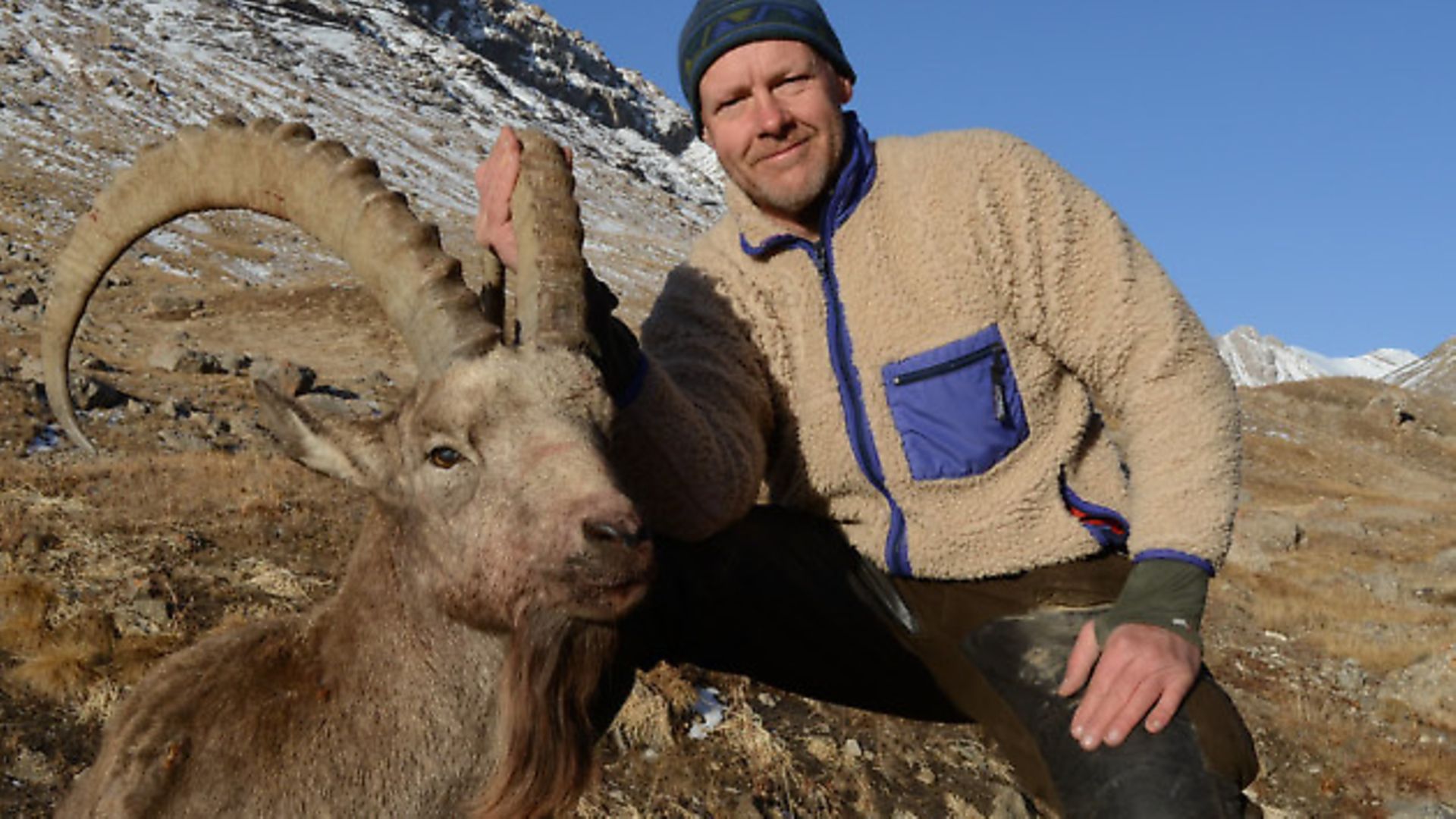 credit: FieldsportsChannel.tv
credit: FieldsportsChannel.tv
It was late afternoon when we reached the peaks. The air was much colder and the wind was freezing our faces. We left our horses behind to get higher on the ridge. We saw many ibex in the distance, mostly female and young. The terrain was in their favour so all we could do was watch them.
Rob, David and Craig went with Aman and Ekes and climbed to another, much steeper ridge. I was with Ulan and the horses. Forty-five minutes later we noticed that all the guys on the ridge were taking their positions, so I went up. I didn’t want to miss the moment. When I got there, Rob was already aiming downhill at an amazing trophy with a herd of 10 animals around it. Craig was giving instructions on elevation and wind, while Rob tried to make himself comfortable to shoot at 698 yards at a very steep angle.
Rob confirmed he was ready and he squeezed the trigger. The sound broke the calm and the bullet ripped through the air, cleanly killing the ibex. It was Rob’s longest and most difficult shot ever. Suddenly, on the opposite mountain, we saw more than 50 animals in four or five groups running uphill. The second one was down and there was one more to go, so we went downhill to retrieve the ibex. It was dark by the time we got there, tired, cold and excited. Still, we couldn’t wait for the next day so we could see the ibex properly in the daylight and see Craig taking another beast.
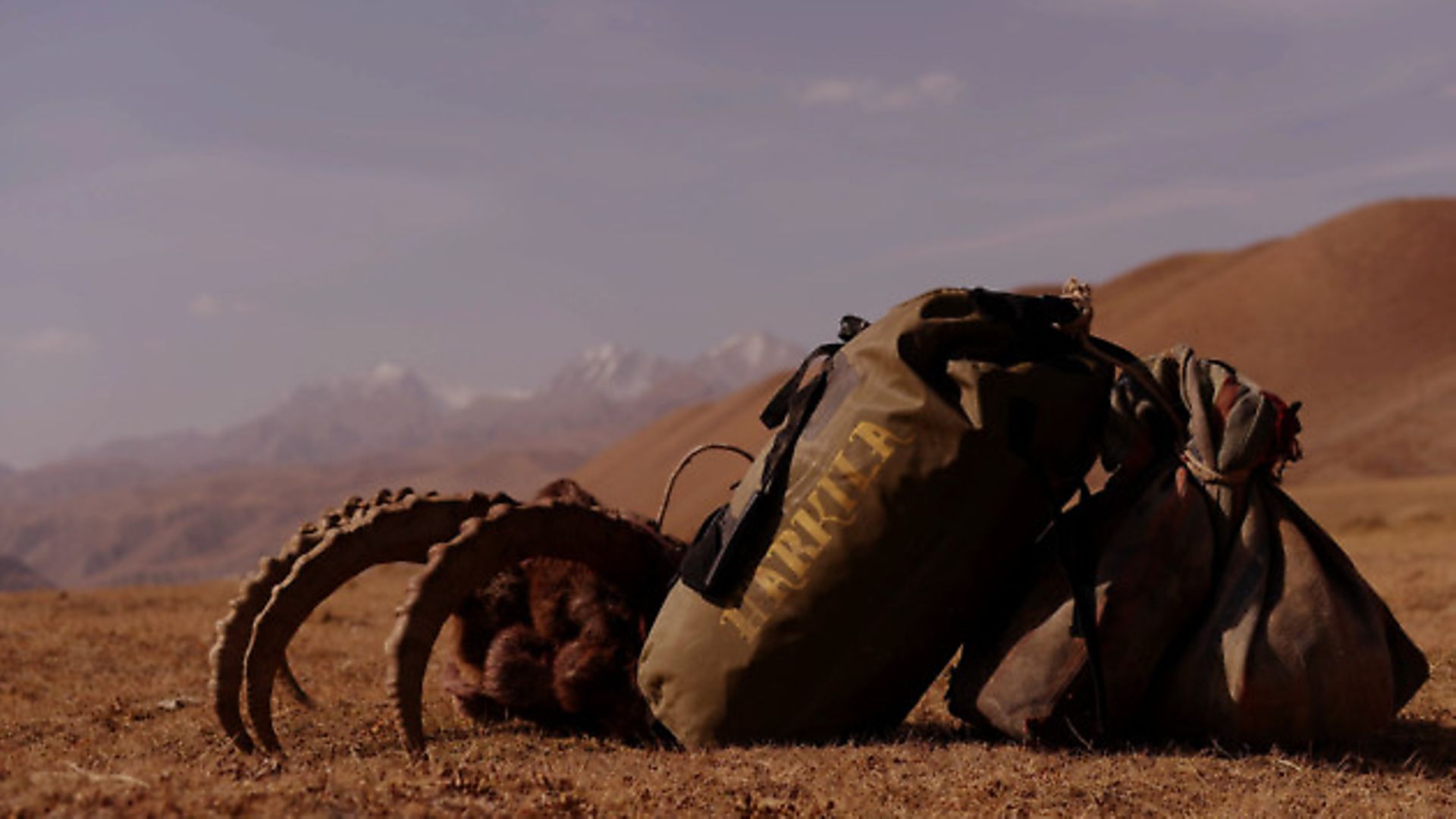 credit: FieldsportsChannel.tv
credit: FieldsportsChannel.tv
The morning came quickly, either that or we hadn’t slept for long, but the sunny, frosty days always put a smile on our faces. The plan was to take everything back to our second camp where we had been based the day before. It took us a good few hours to get back there, before we set up the tents and fire to have something to eat. It was early afternoon and there was enough time for Craig to go out.
He went with Ekes and Ulan, while three of us stayed with Aman at the base to indulge in freshly grilled ibex meat. We took a good chunk of the prime cuts, Rob put some slate stones into the fire and the feast started. The meat sizzling from the stones was delicious with a hint of smoke from some sort of juniper bush. We ate a lot and it was dark when the rest of the crew came to join us. Unfortunately, Craig hadn’t been lucky but he wasn’t worried.
We would have about 60-70km to cover the next day. The horses would be packed up with our gear and eight extra bags full of meat and skins (around 200kg) and the long horns, so at first light the next day we would split into two groups. Craig and Aman went to chase ibex, while the rest went to collect my ibex.
The horses were tired and Craig took mine for the job because it was the strongest, so on many occasions we were walking downhill to make it easier for them. To be honest, it was easier for me to walk than ride at that point. We managed to collect my ibex five hours later, where we found that some big eagles had managed to move stones weighing over 30kg to get some meat from the bag.
Once we hit the valley and the river in the flat country, the horses perked up. They knew their favourite food was only a few hours ahead. We were also looking forward to a nice meal, a few drinks and some shade. We were relieved to have finished the hunt uninjured and with great success.
Craig came back to camp next day after midday. He was knackered and, unfortunately, empty-handed after missing even bigger trophies than ours on three separate occasions due to a problem with his scope. Despite this, he was happy – the adventure and hard work was what counted the most.
This hunt was a real test for us and our equipment. It was an amazing experience, hard, tiring, exhausting and rewarding. It was a highway to hell and back. We can’t wait to do it again.
To book a hunt with Tomo, visit www.artemis-hunting.com